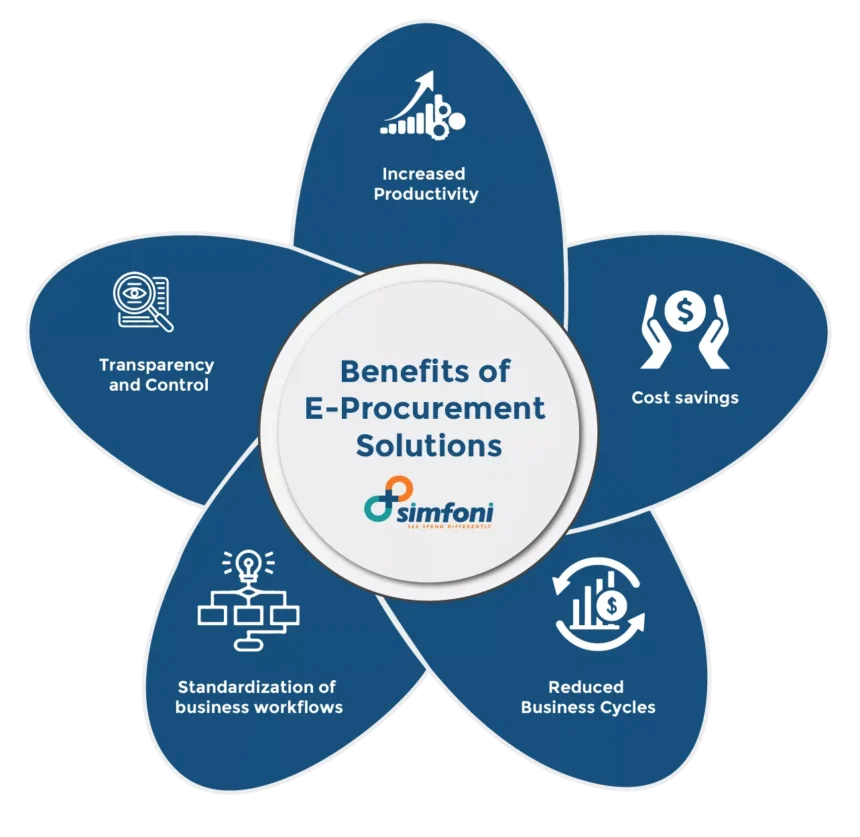Procuring items and services is one of the most significant activities that any business venture would engage in. Still, the process of procurement can be intricate and may entail many phases including a number of players. Spreadsheets, which are suboptimal tools when compared to dedicated solutions, create inefficiencies, increase costs, and pose compliance risks. This is whereby an organization is likely to realize the benefits of undertaking the right procurement software for all your needs.
- Automates and Streamlines Processes
Using procurement software, repetitive time-consuming administrative activities such as transmitting RFQs, evaluating supplier offers, extending POs, receiving goods, and processing invoices are streamlined. Flows can be aligned to current procurement processes, so that the system effectively supports these processes. Approvals that include audit trails help tame rogue tenders, while live reporting offers a view into the S2P process.
Prominent KPIs and data points are at the disposal of procurement professionals in software, leading to compliance, accountability, and efficiency improvements. The digitized catalogue and purchasing system also assist in the monitoring and compliance to organizational buying policies and contractual agreements. They foster lean and flexible procurement processes, the automation of which is a critical component of modern procurement management.
Using procurement software changes more than just automation—it completely changes how procurement is done inside an organization. These systems use cutting-edge technologies like artificial intelligence and machine learning to forecast demand, recommend the best times to reorder, and even spot possible supply chain interruptions before they happen. Businesses are able to reduce the risk of stockouts or overstock situations while maintaining operational continuity thanks to this proactive approach.
- Improves Analytical Spend Oversight
The problem of no control or little control over expenditure is one of the more frequent and detrimental problems faced by procurement teams that use decentralized purchasing across the company. E-procurement software consolidates spending information from every source and place into a one-stop-shop solution.
Real-time analytics enable a comparison of historical spend and new trends based on the supplier, the category, project, location, budget holder, or cost department. Thus, spend can also be matched and measured against budgets. The former, in particular, facilitates an improved understanding of potential sources of supply and the identification of the most suitable ones. It also assists in the search for cost savings means, stop buying without the approval of the suppliers and track contract conformity.
Another advantage of procurement software is the functionality of managing the approval work-flows and policies for source-to-pay. Fraud can be controlled, the flow of transactions can be monitored and controlled, and budgets controlled effectively.
- Stronger position for contract negotiations and general relationships with suppliers
This ensures that more strategic information that can be used in the negotiation of improved contracts with existing and new suppliers of the goods and services is generated from the continued analysis of the spending and market trends. Electronic procurement tools determine who and where you spend most money in order to direct cost-saving strategies more effectively.
Not only does it offer solutions to perform bids and RFx events and supplier quote comparisons efficiently, but also at the right digital tools. Such data-driven negotiations further enhance the position of procurement concerning supplier-related affairs or contracts.
Also, the use of robotic procurement solutions makes supplier management easy, including onboardings, qualification, performance tracking, and interactions. They help in increasing the collaborative and effective interaction with the supply chain partners for creating value.
- Enables Procurement Best Practices
Transitioning from a manual procurement process to procuring integrated procurement software is a digital transformation. It can also be used to deeply scrutinize the current operations and trends, and adapt to these with the help of best practices implemented in the software system.
There is a better opportunity to enhance strategic sourcing, efficient spend analysis, and contract management through the analytical tools and the enhanced visibility that the software provides. Worth mentioning, approval workflows, demand aggregation, and policy compliance also enhance the procurement performance. It can also lead to better management of supply chain risk and ESG impacts.
Aligning the software system to the best practices as evidenced in the case of procurement, it is possible to have higher maturity levels while at the same time enhancing competitive advantage. Static benchmarks and processes are not effective for improvement but frequent benchmarks and processes can help in continuing the improvement.
- Provides Better Decision Making with Information and Knowledge
The software then serves as a treasury of procurement data for analysis purposes, which is a central hub for transforming data into insights. Real-time reporting using embedded reporting and business intelligence enable a clear and timely glimpse of essential sourcing, ordering, deliveries, payments, among others. Apart from the spend analysis, the data mining exercise will identify key trends such as demand shifts, contract compliance, supply and price variations, and cost-saving potential, as well as inefficiencies.
While procurement software uses this data intelligence, it also incorporates benchmarked practices, data as well as recommendations to provide ideal procurement solutions. For example, when a certain category is in the consolidation or diversification of the supply base stage, what should be done? It is often asked what can be a reason for a volume discount: is it possible that its initiation can be explained by an increase in demand? When is an existing long-term contract entitled for renewal or renegotiation?
Beyond these simple uses, procurement software has far greater potential to improve decision-making. These systems can reveal hidden patterns and correlations within large datasets by utilizing machine learning and advanced analytics, giving procurement professionals previously unheard-of insights into their supply chains and spending patterns.
Conclusion
In the coming years, strategic sourcing software will increasingly integrate more AI, ML, and predictive analytics, and the insights and value that they bring will only keep on soaring. It has several impacts that refer to enhanced, end-to-end efficiency, compliance, working capital, and cost changes. However, simply adopting technology cannot foster change in procurement. The software employed must be responsive satisfying organizational needs and current emerging trends in best practices in software engineering.








